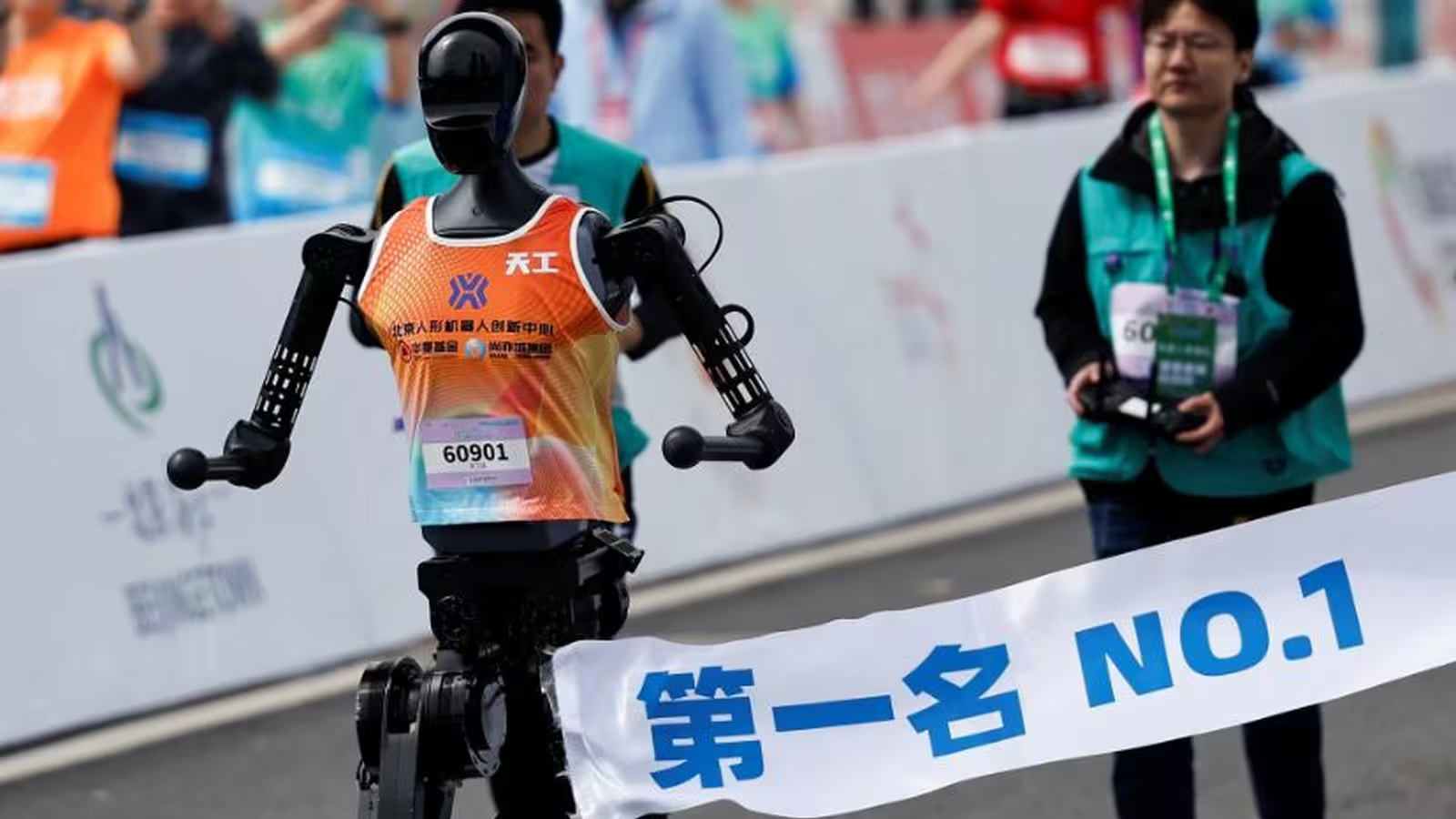5 Minutės
Beijing debuts the World Humanoid Robot Games
AI and large language models (LLMs) have shaped nearly every piece of consumer hardware in 2025, but their most dramatic showcase may be humanoid robotics. From August 15, Beijing will host the inaugural World Humanoid Robot Games — a three-day global competition featuring 280 teams from 16 countries and 487 events across 26 categories. The tournament puts AI-driven humanoids through athletic and scenario-based tests that mirror real-world service and industrial tasks.
Transformed venue: The Ice Ribbon becomes a robot arena
The National Speed Skating Oval, nicknamed the Ice Ribbon and famous for the 2022 Winter Olympics, has been refit for robotics. Organizers installed widened running lanes, a modular 5v5 robot soccer pitch, a boxing ring adapted for mechanical participants, plus staged environments replicating hotels, hospitals, warehouses and factories. Behind the scenes, support hubs provide signal coverage, custom charging cabinets and laboratory-grade air control to keep test parameters consistent.
Event structure and technology highlights
Competition categories and formats
Events range from sprint races and team sports to precision tasks like pharmaceutical sorting and hotel room cleaning. Teams may run robots in fully autonomous mode or under teleoperation. Autonomous runs emphasize computer vision, decision-making models and LLM-driven task planning, while teleoperated entries rely on ultra-low latency connectivity — supported by the venue’s optimized 5G-A network.
Product features: what modern humanoids bring to the field
- AI & LLM integration: Natural language handling, contextual planning and adaptive behaviors powered by large language models for richer interactions and mission-level coordination.
- Perception stacks: Multi-modal sensing including stereo cameras, LiDAR or depth sensors, and tactile feedback to navigate cluttered, human-oriented spaces.
- Actuation and mobility: Lightweight actuators and compliant joints for sprinting, object manipulation, and dynamic balance in contact-rich tasks.
- Power & charging: Quick-swap batteries and centralized charging cabinets allow rapid turnarounds between runs.
- Connectivity: 5G-A and local edge compute reduce control latency for teleoperation and support distributed inference for complex autonomy.
Comparisons and advantages
Compared to industrial fixed-arm robots, humanoids trade raw force for versatility and human-centric form factors. Their advantages include natural interaction with environments built for people, adaptability across multiple use cases, and the ability to interpret verbal or written instructions via LLMs. Against current service robots, advanced humanoids show stronger mobility and richer manipulation, but at the cost of higher complexity and energy needs.
Use cases demonstrated at the games
Many competition tasks are directly translatable to commercial and public applications:
- Hospital logistics: sorting and packaging prescriptions, patient assistance and material transport.
- Hospitality: autonomous room cleaning, trash collection and guest interaction scenarios.
- Warehousing and light manufacturing: object picking, sorting and line-side material handling.
- Security and inspection: patrol routines, anomaly detection and environment reporting.
Market relevance and who's competing
The games are co-organized by the Beijing Municipal People’s Government, China Media Group, the World Robot Cooperation Organization and the Asia-Pacific RoboCup International Council. Notable Chinese robotics firms — including Yushu Technology, Xinghaitu, Tiangong and Fourier — compete alongside leading universities like Tsinghua, Peking and Shanghai Jiao Tong. International teams from the US, Germany and other countries are also participating. Companies such as Meituan-backed Xinghaitu are supplying platform humanoids like the R1Pro and R1Lite to multiple teams, underlining the event’s role as both a competition and a commercialization showcase.
Why this matters for AI, robotics and industry
The World Humanoid Robot Games accelerate real-world testing of AI, perception stacks and human-robot interaction. They provide a standardized stage to compare autonomy vs teleoperation approaches, stress-test connectivity solutions like 5G-A, and expose commercial gaps — especially around battery life, safety, and reliable grasping. For enterprises, success at the games can speed product maturation and market adoption; for researchers, it pushes algorithms to perform under competitive pressure and realistic constraints.
Conclusion
Beijing’s World Humanoid Robot Games mark a milestone in robotics: a large-scale, multidisciplinary stress test for humanoid platforms that combine LLMs, computer vision, advanced actuation and next-gen networks. Beyond medals and trophies, the event offers a snapshot of how AI-driven humanoid robots could move from labs into hotels, hospitals and warehouses — reshaping labor, services and the competitive robotics industry.
Šaltinis: gizmochina



Palikite komentarą